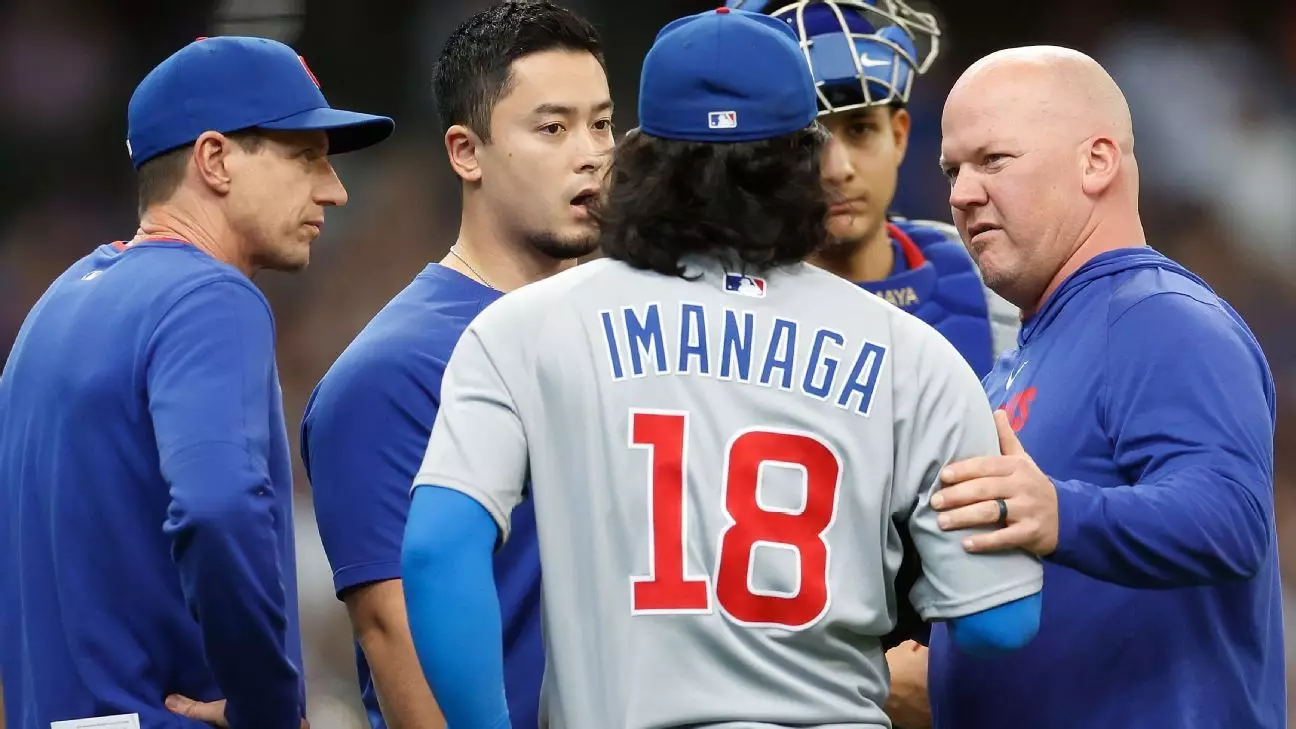In the relentless world of Major League Baseball, injuries serve as a grim reminder of the sport’s physical demands. The Chicago Cubs’ decision to place Shota Imanaga on the 15-day injured list due to a mild strain of his left hamstring reflects the club’s commitment to cautious management, particularly for a player who has shown considerable promise. This cautious approach is especially relevant given Imanaga’s unfamiliarity with the nuances of hamstring injuries, which complicates the recovery timeline.
Imanaga is forced to confront a reality all too familiar to athletes: the risk of injury is an unavoidable aspect of competing at a high level. The Cubs have opted for a conservative approach, encouraging him to keep his arm in shape while allowing his hamstring to mend. The left-hander remains optimistic, interpreting the injury as a manageable setback compared to more debilitating shoulder or elbow issues, which often bear more significant long-term consequences.
Learning from Peers and Past Experiences
In situations where recovery is paramount, drawing wisdom from others who have endured similar challenges becomes invaluable. Imanaga turned to teammate Justin Steele, who has his own experience with hamstring strains, seeking insights on the rehabilitation process. Such interaction fosters a sense of camaraderie among players, offering emotional support and practical advice. However, the reality remains that each injury is unique, necessitating a tailored approach to recovery.
Imanaga’s willingness to communicate with Steele about his experience illustrates a crucial aspect of injury management in sports. Players must feel empowered to seek support, as the mental component of recovery is often as critical as the physical. This perspective is vital for discussing future risks and expectations, ensuring that players are not only physically ready to return but also mentally prepared.
Balancing Performance and Recovery
While awaiting his return to form, Imanaga’s focus on self-reflection and adjustment highlights the need for athletes to analyze their own preparation practices. The mental shifts involved in handling an injury can be substantial; players often benefit from using downtime to reassess their routines and refine their strategies. As Imanaga noted, numerous variables may contribute to his injury, indicating a mature perspective that embraces accountability.
His performance prior to injury — a 2.82 ERA with a solid record — demonstrates both talent and potential, raising the stakes for his recovery. The Cubs, significantly impacted by Imanaga’s absence alongside that of Steele and other rotation members like Javier Assad, face an arduous decision regarding his replacement. This situation illuminates the broader challenge teams face in juggling talent management with the unpredictability of player health.
Looking Ahead in the MLB Landscape
The implications of Imanaga’s injury extend beyond the Cubs’ immediate lineup. The franchise signed him to a substantial four-year, $53 million contract, accentuating his importance to their future. The injury not only affects his current performance but could also reshape the team’s trajectory this season. The Cubs must now manage their pitching staff with an eye on both short-term needs and long-term health considerations.
With players like Cade Horton and Chris Flexen as potential substitutes, the organization stands at a crossroads in assembling a competitive team. The depth of the rotation has taken a hit, adding pressure on management to navigate the challenges of player development and injury recovery. It serves as a poignant reminder that every injury in sports carries a dual weight: the immediate impact on team dynamics and the future implications for a player’s career.
In sum, Imanaga’s situation is emblematic of broader themes in MLB: the delicate balance of performance and recovery and the insistent pressure on players to return to form within increasingly competitive frameworks. As the Cubs grapple with these realities, the path forward will be as much about strategic choices as it is about the resilience of the players themselves.

